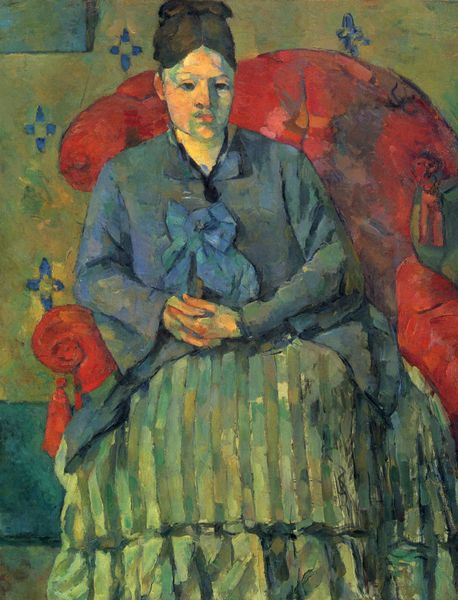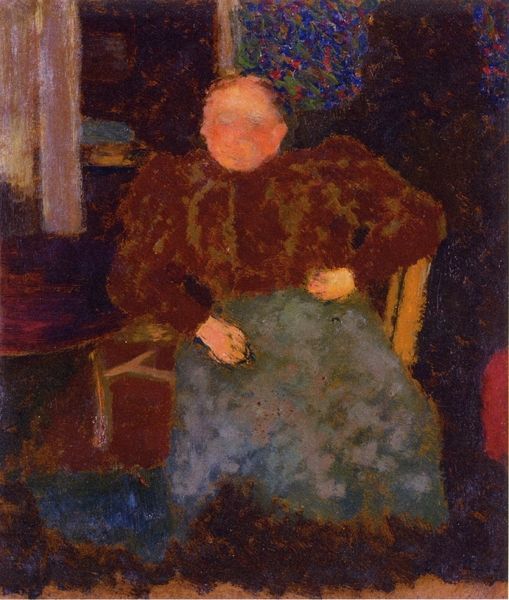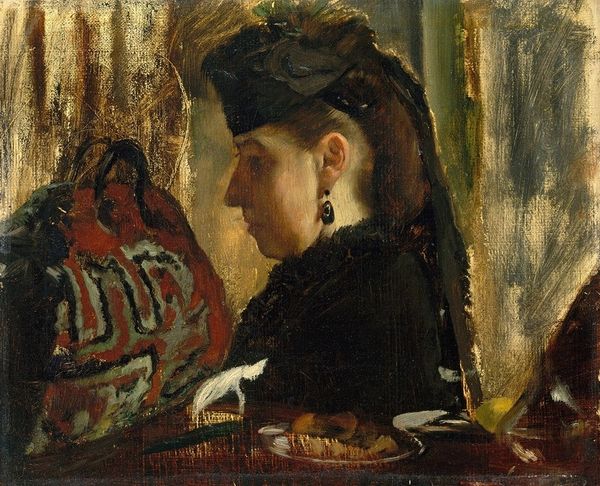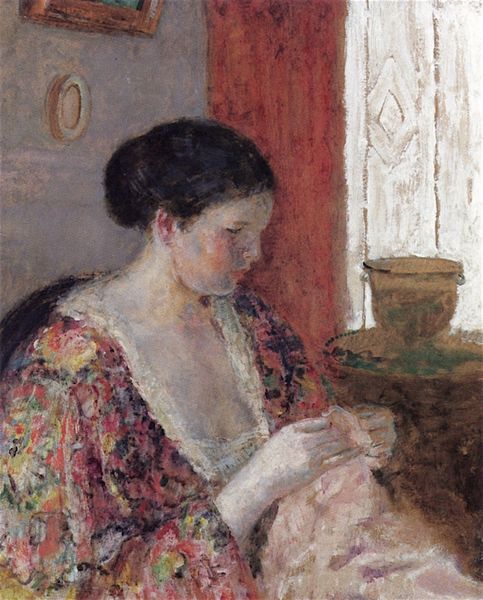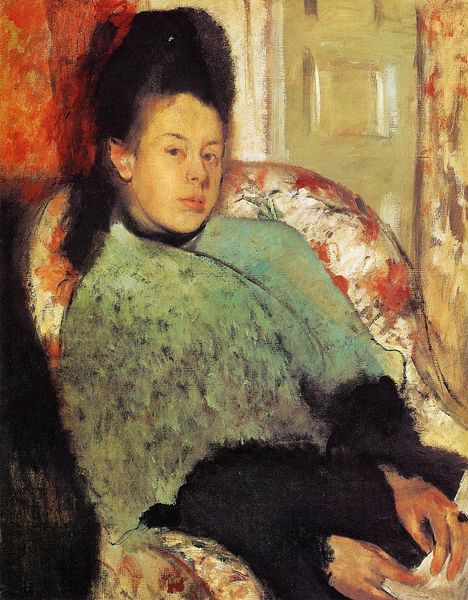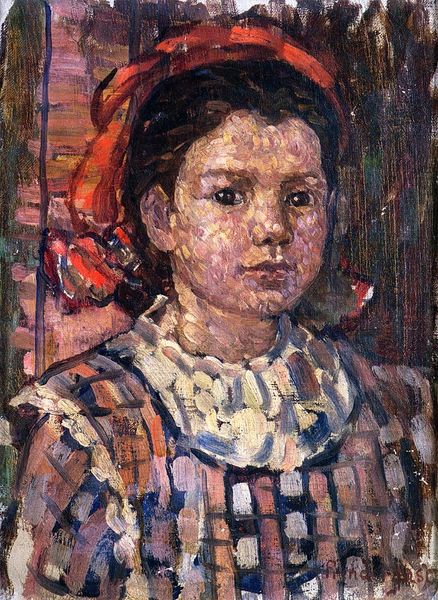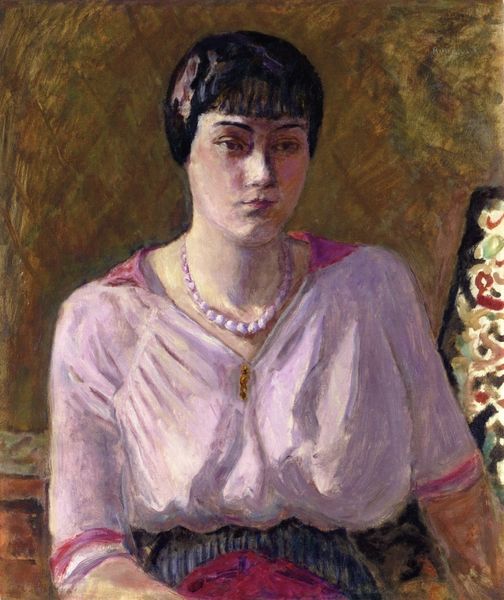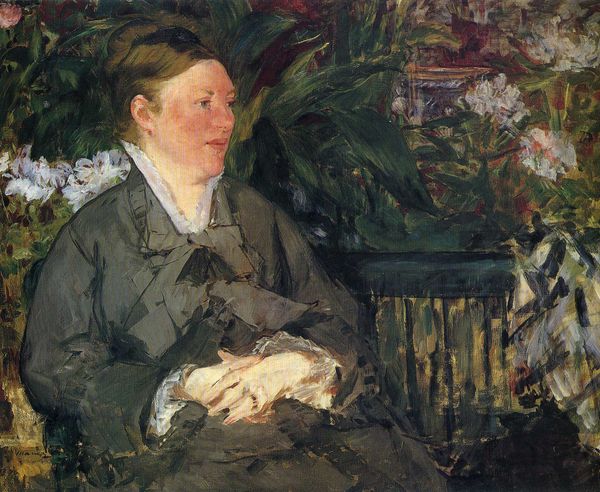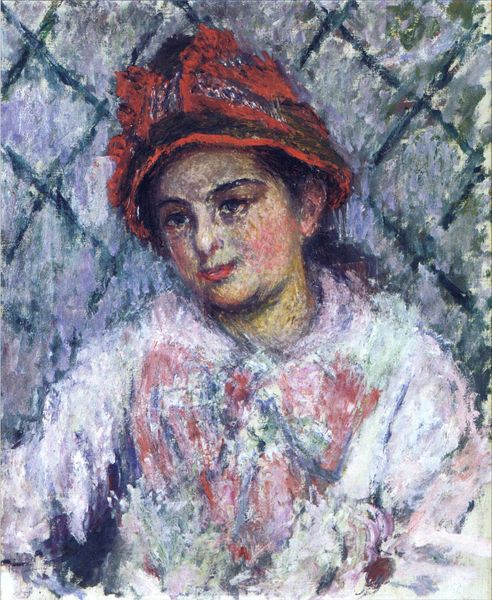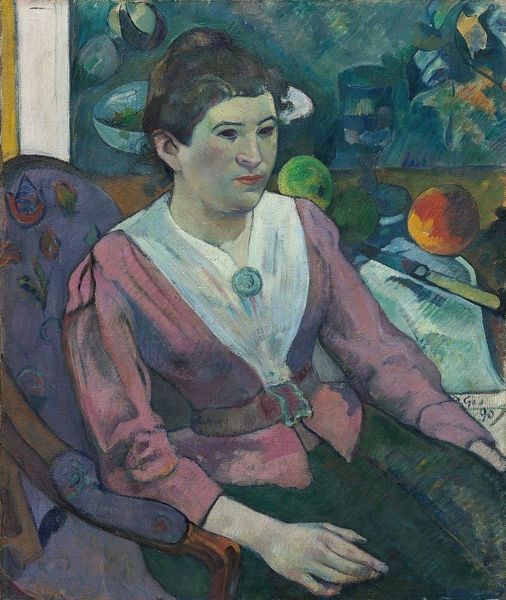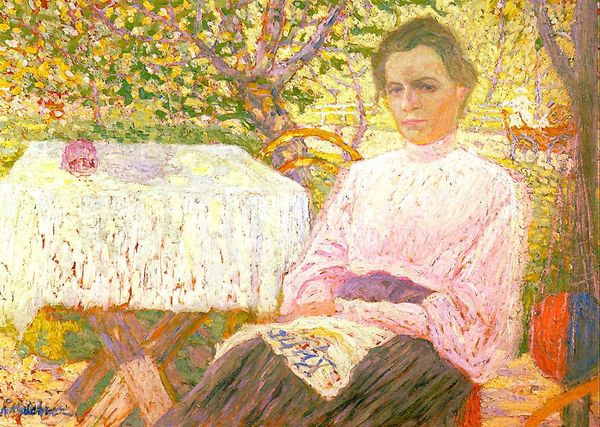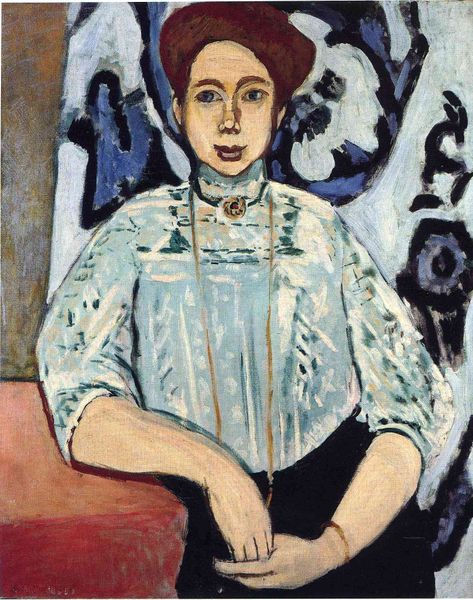
oil-paint
#
portrait
#
oil-paint
#
oil painting
#
intimism
#
post-impressionism
#
portrait art
#
expressionist
Copyright: Public domain US
Curator: Ah, I find myself strangely drawn to the muted vibrancy here. The piece we are considering is Cuno Amiet's "Portrait of Emilie Amiet-Baer," painted in 1894. Editor: It's like she's been placed deliberately against this wallpaper that wants to devour her, isn't it? All that swirling colour... It gives her stillness an extra weight. Curator: Exactly. Observe the planar construction and deliberate geometry. See how Amiet uses flattened space to emphasize the decorative flatness of the background pattern, and its contrast with the subtle modelling of the figure’s face. We also see, formally, elements of Intimism and, nascent, early Expressionist tendencies. Editor: Her face has this calm knowing, though, doesn’t it? As if she knows a secret about colour itself! About the soul trapped within patterns. Do you feel it’s an honest likeness, or Amiet using her as, well, raw material? Curator: That's a pertinent point. It isn't a classical idealisation. One reads psychological penetration alongside formal innovation. There's a clear move beyond mere representational accuracy. The somewhat unorthodox colour choices point to something further, perhaps his understanding of Impressionism, his breaking-away and early signature. Note the almost pointillist quality, the lack of blending. Editor: It makes the painting itself seem more…vulnerable, doesn’t it? Exposing its own making? The lady Emilie seems to understand. There is some narrative ambiguity but then, these canvases feel charged because they push past superficial portraiture and catch feeling. Don’t they? Curator: Precisely, and to move into subjectivity as part of art, that remains vital even now. A great push forward and one felt through the texture as well, those tactile qualities he manages to tease out with the oils. Editor: And like some coded message, something he needed to put in paint that could be deciphered…years, decades after. He needed Emilie to stand there. He needed those swirls…It's just wonderfully awkward and intimate, don’t you think? Curator: It is a key early example of those shifts, yes. I think considering the visual components along these lines only enriches its value further for us today.
Comments
No comments
Be the first to comment and join the conversation on the ultimate creative platform.

